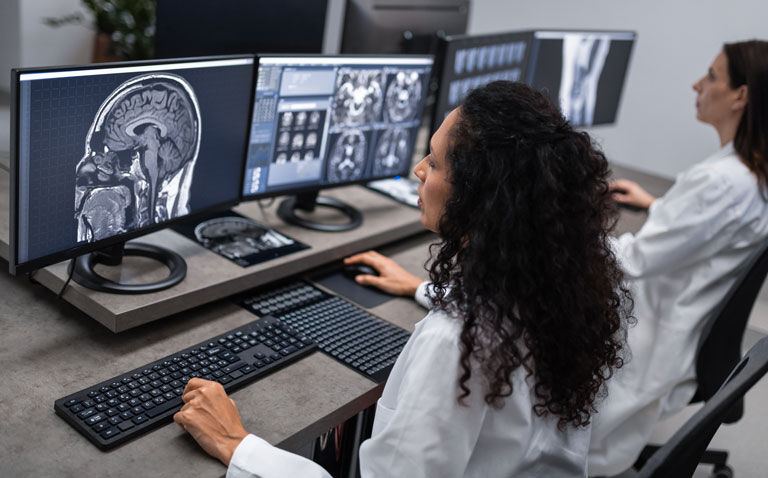A survey has found that nearly a third of radiographers report being unsure as to how an artificial intelligence system makes its decisions.
In a survey of radiographers, nearly a third stated that they did not know how an artificial intelligence (AI) system made its decisions according to the results of a study by Irish and UK researchers.
A radiology workforce report in 2020 said that across the UK, one in 10 radiologist positions was unfilled. Nevertheless, the reporting of radiographic images by radiographers rather than radiologists is an established practice in the UK and immediate reporting of emergency department radiographs by a radiographer has been deemed a cost-effective service development.
Despite representing a cost-effective service development, as with radiologists, there is a national shortage of radiographers in the UK, with a 2021 report indicating that the average current UK vacancy rate was 10.5% as of November 2020.
To aid both radiologists and radiographers, in recent years there has been an increased use of artificial intelligence (AI) technologies for applications in radiology. Moreover, AI system interpretation of imaging is impressive, with one international study finding that an AI system’s ability to identify breast cancer maintained non-inferior performance and reduced the workload of the second reader by 88%. The introduction of AI systems therefore has the potential to help reduce any backlogs in unreported images.
But the extent to which radiographers understand and interact with AI technology was the subject of the present survey by the Irish and UK team.
They developed a questionnaire focused on AI as used in radiographer reporting and which was initially piloted with a group of 12 radiographers who had a range of different professional backgrounds.
A total of eight questions focussed specifically on AI and its use in radiographer reporting and respondents answered using a seven-point Likert scale (ranging from strongly agree through to strongly disagree). The survey was disseminated via a link posted on professional social media platforms (e.g. LinkedIn and Twitter).
Radiographers’ views
A total of 411 completed surveys responses were received from radiographers working diagnostic and therapeutic radiographer. However, the results of the present study were limited to diagnostic radiographers (86). Perhaps the first and most illuminating finding, was how 89.5% of respondents indicated that they were not currently utilising AI as a part of their reporting role.
In response to a question which asked “I understand how an AI system reaches its decisions” only 28.8% (aggregate value) reported that they ‘somewhat disagreed’, ‘disagreed’ or ‘strongly disagreed’ although 61.6% (aggregate value) that they ‘agreed’ or ‘somewhat agreed’.
In addition, the majority of respondents (59.3%) disagreed that they would be confident in explaining the AI system decision to other healthcare professionals and similarly, only 29.1% agreed that they would be confident explaining the decision to patients or their carers.
While 57% reported that they would feel more certain of their diagnosis if an AI system agreed with their interpretation, the majority (69.8%) stated that they would seek a second opinion if the AI system disagreed with them.
Finally, when asked to rate their trust in an AI system for diagnostic image interpretation on a scale of 1 to 10,, the median score was 5. When asked to choose from a list of possible factors that would increase their level of trust in the AI system, the most common responses were ‘overall performance and accuracy of the system (76%), a visual explanation, such as a heat map (67%) and an indication of the confidence of the AI system in its diagnosis (62%).
The authors concluded that while the majority of respondents were not currently routinely using an AI system as part of their reporting, awareness of how clinicians interact with AI systems was needed as this might promote responsible use of such systems in the future.
Citation
Rainey C et al. UK reporting radiographers’ perceptions of AI in radiographic image interpretation – Current perspectives and future developments Radiography 2022.










